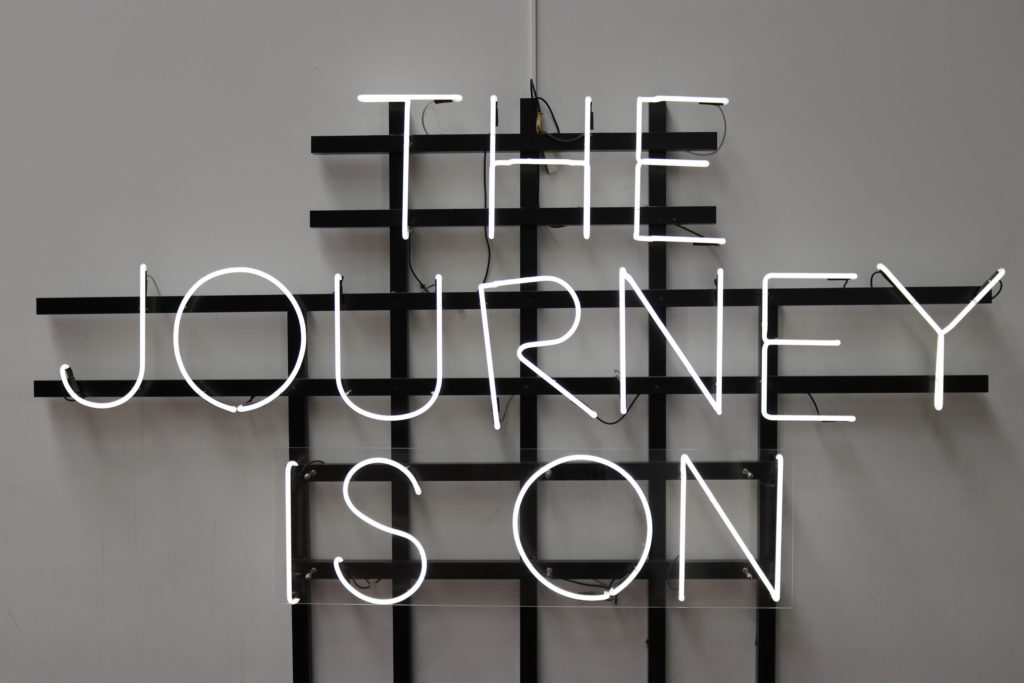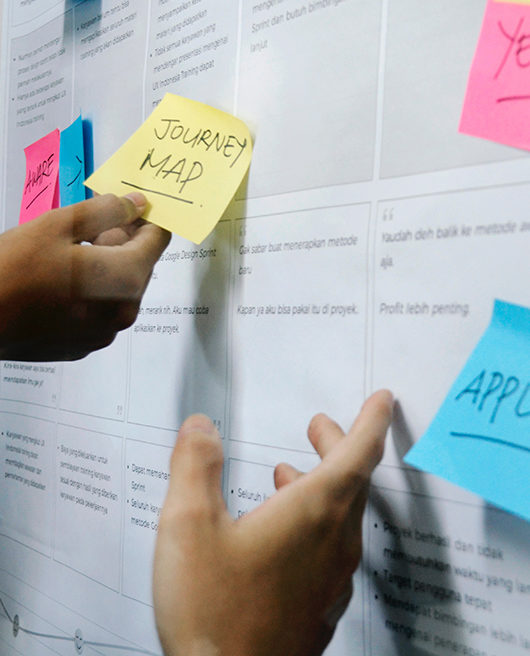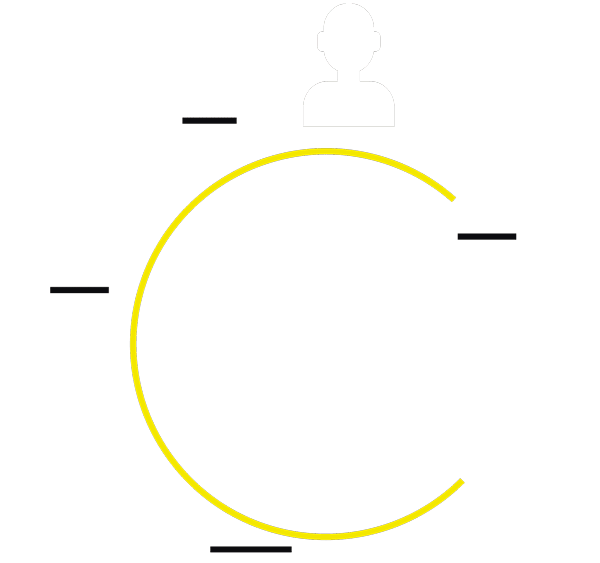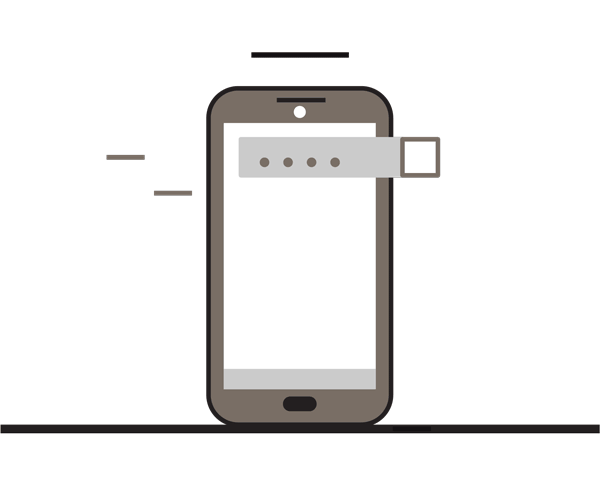
it’s time to talk about user journey
Now that you have done your research, created a strategy and have a plan for how you’ll organize your content, it’s time to talk about user journey. This is a key component to ensuring we understand how a user will interact with our product, and how we make that process easy and delightful.

What is user journey?
First, let’s define what a user journey is. A user journey is a visualization that tells a narrative of the end-user trying to accomplish a specific task or goal as it pertains to your company. It provides a holistic view of the customer experience by uncovering moments of both frustration and delight throughout a series of interactions. Done successfully, it reveals opportunities to address customers’ pain points and create a better experience for your users.

User Journey Mapping
Typically, the result of this visualization is a user journey map, which shows the step-by-step process a user goes through to accomplish a certain goal. This is great for understanding the workflow and if it is consistent with the tasks and goals the user might have.
There are a lot of ways to do this, from sticky notes on a white board to digital tools. Ultimately, any tool should take into account the same things:
- User Persona: Define your users by creating a person who would use your product
- Scenario and User Expectations: Define what would bring the user to you and what they expect to find when they get there
- Journey Phases: Define the steps a user would take to ultimately purchase your product
- Touchpoints: List all the places users will interact with your product or brand
- Actions: These are the actual steps that a user would take, in narrative form
- Motivations: The thoughts, feelings and questions a user has during their experience
- Emotions: Plotting the emotional ups and downs of the customer’s experience
- Sketch of the Journey: An actual diagram of what the customer journey looks like
- Opportunities: Identified areas of improvement, based upon the work done to create the journey
Let’s define these further by creating a user journey for a fictional company. Let’s say our company, TrackerBottle, sells special water bottles for hikers that use GPS to track their location and help find them if they get lost. These water bottles are expensive, but extremely high quality and have even been featured in two news articles where hikers were found using TrackerBottles.
Let’s start our user journey map.

User Persona
Sally is a 45-year-old mother of three sons. She is a successful businesswoman, with disposable income but she doesn’t make impulsive buying decisions. She’s a researcher, and you have to convince her that your product is worth her money to get her to buy.
This user persona tells us a few things:
- Sally can afford our product
- She will research TrackerBottle, and competitors before buying

Scenario and User Expectations
Sally is not a hiker, but her college-age son is and he and his friends have decided to hike the Pacific Crest Trail over summer break. Sally is supportive, but worried, naturally. She wants to purchase something that will give her peace of mind and also show her son that she is supportive of his choice.
Sally expects to find a high quality product her son will be excited about that will also give her peace of mind about his hiking trip. She is busy and wants to find what she’s looking for without the hassle of shopping brick and mortar establishments.

Touch Points
We know Sally will do her research, so we can be sure she will interact with numerous touch points along the way, such as:
- Website
- Social channels
- Paid ads
- Customer testimonials
- Blogs and news
- Customer support
Actions, Motivation and Emotions
We know that Sally will research before she buys. She is motivated by the safety of her son, and she is feeling nervous about his hiking trip. She will begin with an internet search for hiking safety equipment, and likely enter the sales funnel through a paid ad. She will read about the product, read reviews and blog posts, and visit social media channels. She will reach out to customer support to get all of her questions answered.
To get Sally to make a purchase, we need to provide her with proof that our product works to build her trust, and that TrackerBottle is an authority in the hiking safety space, so she feels peace of mind knowing that her son’s likelihood of a safe hike will be enhanced by having a TrackerBottle with him.


Opportunities
Once we have sketched the user journey, we can see where our opportunities lie. How many clicks did it take Sally before she could buy a TrackerBottle? Was it easy for her to navigate from the home page to the blog so she could read news articles? Was customer support equipped to confidently answer all of her questions? How long did she have to wait to get answers from customer support? Is there enough social proof to convince her that our product will meet her needs? Are there ways we could make the experience more streamlined?
Identifying these opportunities is where we find areas to improve the user experience and delight customers. With these areas identified, you can create goals and benchmarks that your team can work toward.
The journey is ongoing.
Have you had an interaction with an organization lately that wanted you to mail them a letter, or the only way for you to submit a document was via fax? These are examples of organizations that have not revisited their user journey in a long time.
User journeys are rarely set in stone. As platforms and technology shift, and consumer needs and wants change, your customers’ journey should too. Continual data gathering and testing is typical so you can be sure that the journey is always improving and delighting customers.
Hello, we’re M Agency
We do things a little differently. We craft inspired brand experiences that connect organizations with their unique purpose — we call this meaningful marketing.
By understanding how the human brain drives decision making, we help organizations uncover and tell their authentic story — what we like to call their ‘M’.
Let’s work together.